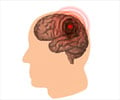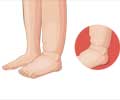A simple blood test would soon help identify stroke survivors at risk of another cardiovascular event, say researchers.
The research team from University of North Carolina, Chapel Hill suggests that measuring blood flow in the ankle may identify stroke survivors at risk of subsequent events such as asymptomatic peripheral artery disease (PAD) and transient ischemic attack (TIA).In the test, the ankle brachial index, compares blood flow in the ankle to blood flow in the arm to detect poor circulation caused by fatty plaque buildup in the lower body, a condition known as peripheral artery disease (PAD).
The findings revealed that 26 percent of the survivors had asymptomatic PAD, and they had three times more subsequent cardiovascular events - stroke, heart attacks or death - in the following two years compared to those without PAD.
Furthermore 50 percent with asymptomatic PAD suffered subsequent events, compared with 16 percent of those without the disease. PAD was significantly associated with future vascular events, especially strokes.
PAD occurs when arteries in the extremities become obstructed by plaque. Leg pain, cramping, weakness and limping during physical exertion are the primary symptom.
"ABI measurement may be appropriate for screening stroke/TIA patients who may be at high risk for vascular events," said lead researcher Dr Souvik Sen, M.P.H., director of the Stroke Centre at the University of North Carolina, Chapel Hill.
Advertisement
The study is published in Stroke: Journal of the American Heart Association.
Advertisement
SRM













